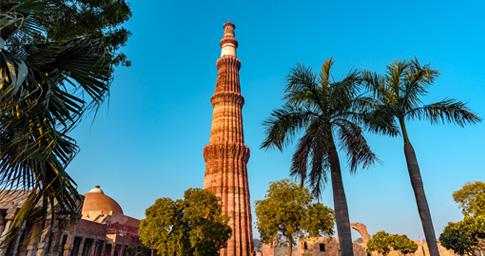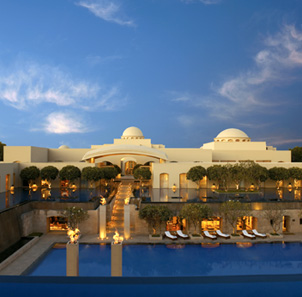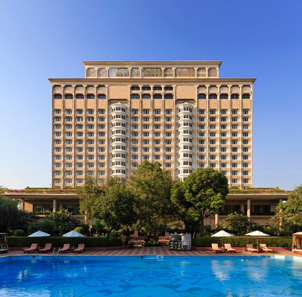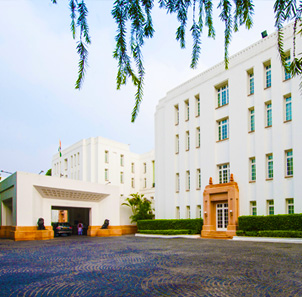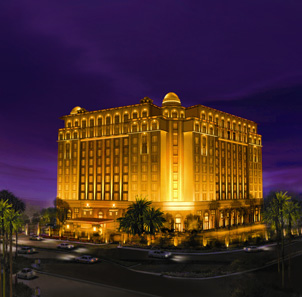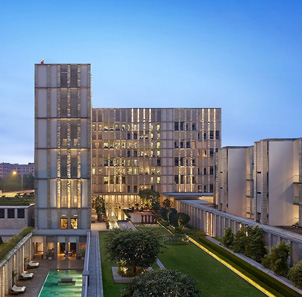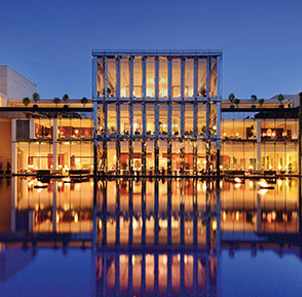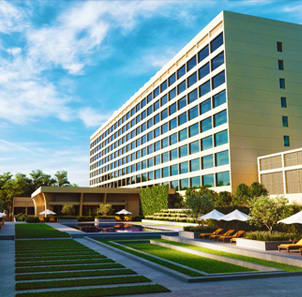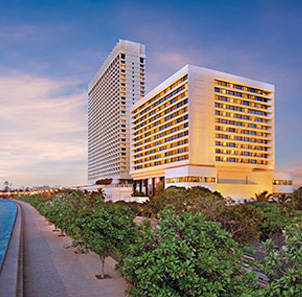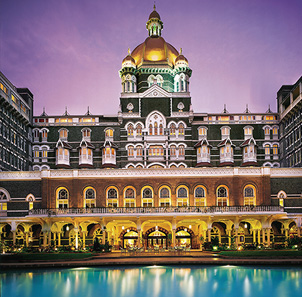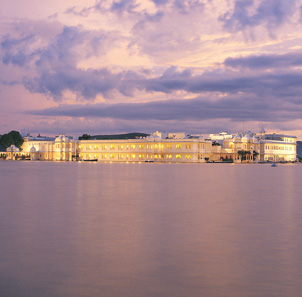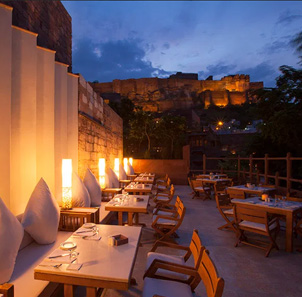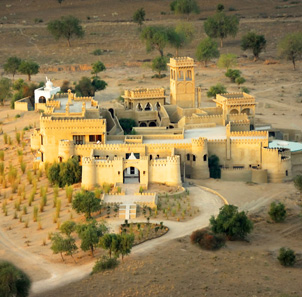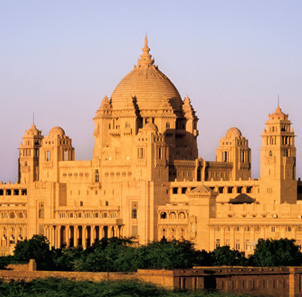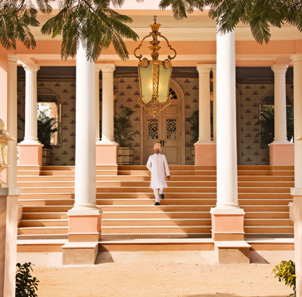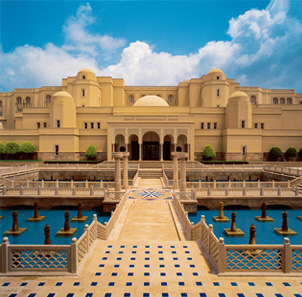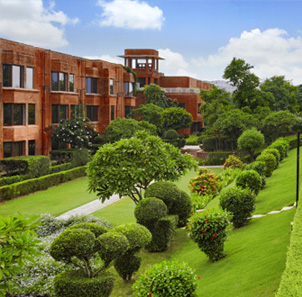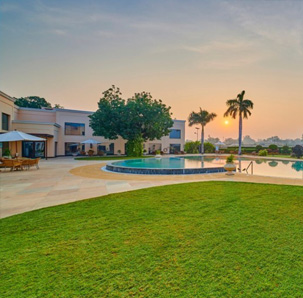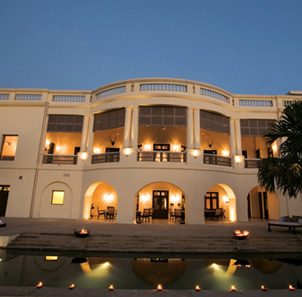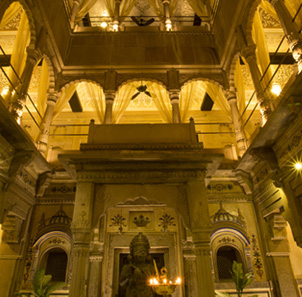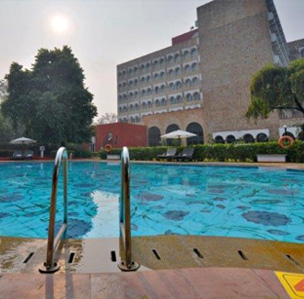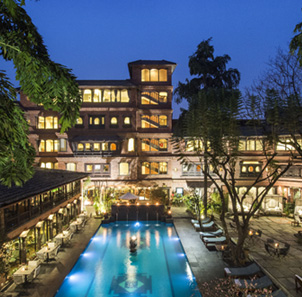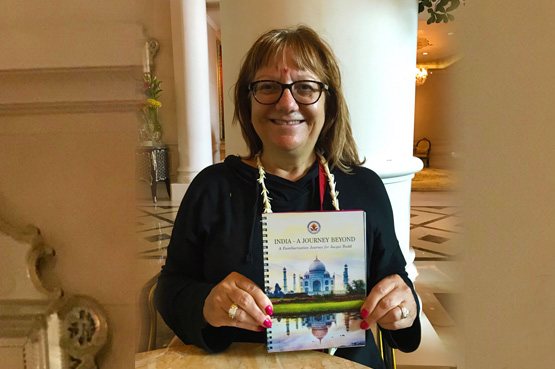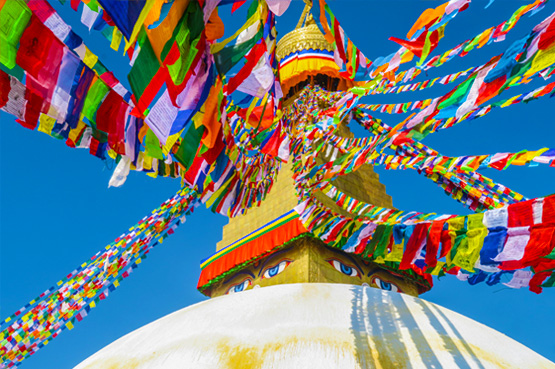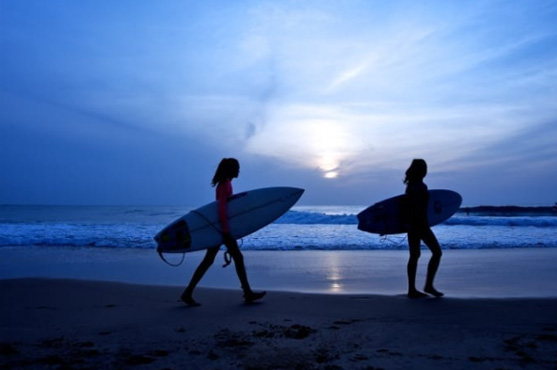Undiscovered Gems of India & Nepal
Welcome to the colorful culture in India and the pristine beauty of the Himalayas in Nepal.
You will encounter the magnetic vibe of Mumbai city, breathe in the romantic air of Udaipur, the vibrancy of Jaipur and mighty forts of Jodhpur. Embrace spirituality at Varanasi, witness the iconic beauty of Taj Mahal and marvel at the magnificent temples of Khajuraho. India is a treasure box of sights and sounds.
We then move to the rugged and magical capital of Nepal - Kathmandu. From ornate carved palaces, majestic stupas to breath-taking monasteries, the sheer energy of this city will make you take deep breaths.
Embark on a great trail to India and Nepal and experience what it feels to be truly happy!
Journey
- Day 1 Arrive Mumbai
- Day 2 Mumbai
- Day 3 Mumbai - Udaipur
- Day 4 Udaipur
- Day 5 Udaipur - Ranakpur - Jodhpur
- Day 6 Jodhpur
- Day 7 Jodhpur - Jaipur
- Day 8 Jaipur
- Day 9 Jaipur
- Day 10 Jaipur - Fatehpur Sikri - Agra
- Day 11 Agra
- Day 12 Agra - Orchha - Khajuraho
- Day 13 Khajuraho - Varanasi
- Day 14 Varanasi
- Day 15 Varanasi - Kathmandu, Nepal
- Day 16 Kathmandu
- Day 17 Kathmandu - Delhi
- Day 18 Delhi
- Day 19 Delhi - Departure
Detailed Itinerary
DAY 1Arrive Mumbai
Upon arrival, you are met and transferred to your hotel, which is a destination in itself - a place where kings and presidents have been guests since 1903. En route, take in the sights of Mumbai, formerly known as Bombay, but also known to the original inhabitants, the Kolis, as “Mumba Devi,” their goddess mother. Once a group of seven islands, Bombay was given to the British as a dowry when Charles II married Catherine of Braganza. The British then leased the islands to the East India Company, which in turn began initial development of the city. Today, this is one of India’s most important and cosmopolitan centers for industry, cinema, commerce and foreign trade
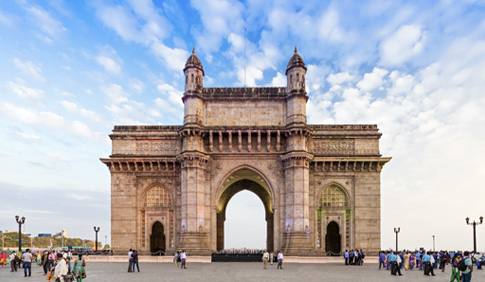
DAY 2Mumbai
If you like surprises (good ones), Mumbai has more than a few in store, with an eclectic mix of cultures and architecture to amaze and delight you on your introductory tour. Head to the heart of British Bombay for a visit to the Prince of Wales Museum, whose wide-ranging collection is especially notable for its superb sculpture and miniature paintings. Nearby, see the Jehangir Art Gallery, offering changing exhibits of leading Indian artists; the Gateway Of India and Mani Bhavan, the memorial built for Mahatma Gandhi.
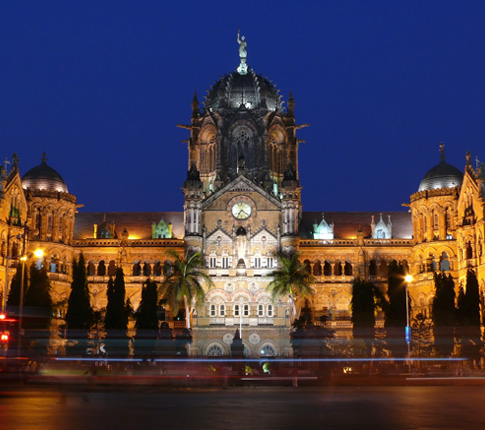
DAY 3Mumbai - Udaipur
Slip into some comfy shoes for a morning walking tour from the hotel to marvel, up close and personal, at some of Mumbai’s famous and beautiful architecture; perhaps to sample some of the city’s renowned street food, and maybe shop for textiles or books. Later you’ll take a tea break at a shop reminiscent of Raj-era colonial charm. This afternoon, fly to Udaipur, perhaps India’s most beautiful city, where you will transfer to the renowned Taj Lake Palace Hotel, a white marble and mosaic dream situated on an island in the center of Lake Pichola, built in 1746 by Maharana Jagat Singh II.
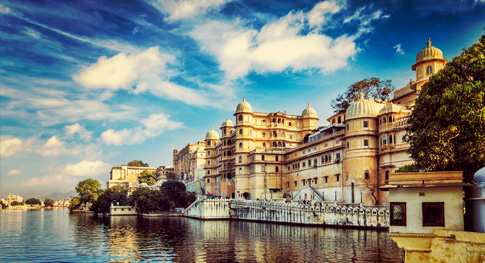
DAY 4Udaipur
palaces, gardens - this is everything you expected of Udaipur. Your tour begins at City Palace, which sits on a rocky outcropping, its canopies and turrets gleaming - the centerpiece of twelve palaces in Rajasthan’s largest royal complex. Visit the wondrous museum and palaces, shining with marble and granite, then continue to Jagdish Temple and the Pratap Memorial. Later, you’ll see the breathtaking collection of crystal at Fateh Prakash Palace, where you will also have high tea - tiny sandwiches, cream, jam, scones brilliant! In the late afternoon, you will cruise on Lake Pichola to view the City Palace at sunset, then ride along the ghats, making stops at several of the islands
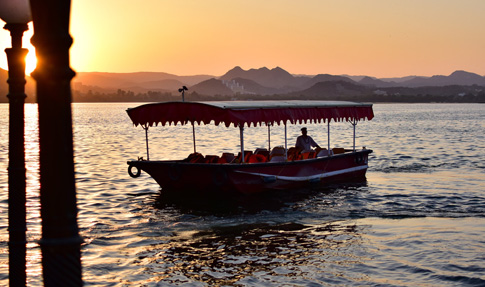
DAY 5Udaipur - Ranakpur - Jodhpur
An interesting stop is planned today en route to Jodhpur, and a change of scenery as well. Deep in a hidden valley, you will explore Ranakpur, famed for its 15th century Jain temples, the largest complex of its kind in India. Built during the reign of the monarch Rana Kumbha, the complex is known, among other things, for its 48,000-square-foot basement and a design in which the number 72 plays a significant role. There are four subsidiary shrines, and twenty-four pillared halls and domes supported by more than four hundred columns – among 1,444 in all, each intricately carved, with no two being alike. Tonight, sleep tight in the Blue City of Jodhpur.
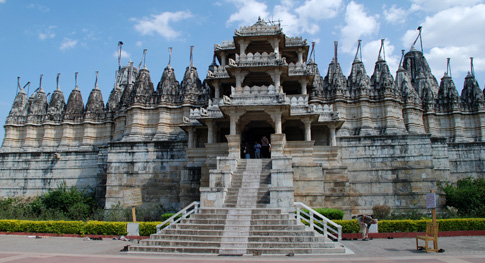
DAY 6Jodhpur
What do you want most? From historic grandeur to great shopping, Jodhpur has it all. This morning’s tour takes you to Mehrangarh Fort, described by Rudyard Kipling as the work of angels and giants. Once capital of the Marwar dynasty, it was built on a low hill situated in the heart of the Thar Desert and surrounded by nearly 35,000 square miles of sand. sand and … sand. You will also see the Umaid Bhawan Palace, so large it took 16 years and 3,000 workers to build. Today, a third of it is occupied by the Maharaja Gaj Singh, and the remainder by hotel guests. After noon, we visit a small village to see the art of making glazed blue pottery, one of Jodhpur’s signature crafts, along with good antique reproductions, textiles, and spices to ship home. In the local bazaar, enjoy a famous makhania lassi, a drink of yoghurt, saffron and cardamom.
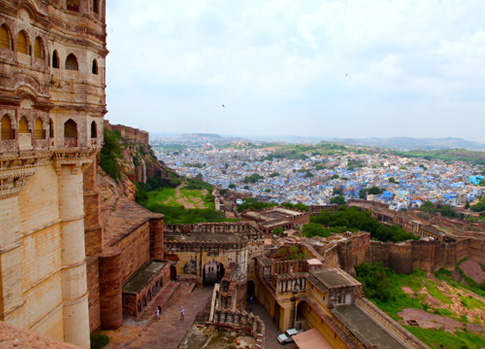
DAY 7Jodhpur - Jaipur
Chart your course for a change in hue, as you drive from Blue Jodhpur to the Pink City of Jaipur, visiting en-route, Pushkar. Legend has it that when the creator Lord Brahma dropped his lotus flower, pushpa, to earth to kill an enemy, three lakes appeared where the petals fell. With its temples and bathing ghats, the largest of the lakes is now revered as one of India’s holiest sites. Pushkar also is the venue for the largest camel market in the world. Then it is on to Jaipur, the third corner of India’s Golden Triangle. Also located in the state of Rajasthan, Jaipur was created from 22 feudal kingdoms, following the 1947 Partition and is the capital city. On your drive, evidence of lucrative trade routes over the Thar Desert is seen in the remains of luxurious palaces, temples and forts built by successive rulers, including Hindu Rajputs and Muslim Mughuls. Your hotel, the Rambagh Palace, was built in 1835 and after numerous incarnations has been home to generations of royals - an authentic palace waiting to welcome you after your day’s journey
.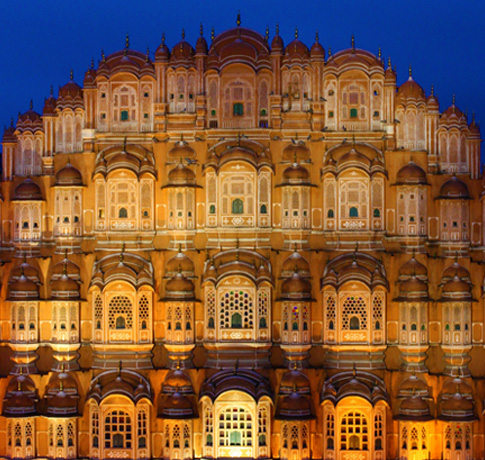
DAY 8Jaipur
Tuesdays always seem like the perfect day for an elephant ride, don’t they? So up you go by elephant-back to the ramparts of Amber Fort, a spectacular fortress that protects a complex of palaces, temples and exquisite marble and mirror halls and apartments. Explore later in the day the feudal side of Jaipur that lives on in the ornate and brilliant saris, voluminous turbans, tinkling bells – oh, and a relative absence of women out and about. See where attitudes had their roots at Hava Mahal (Palace of the Winds), where a high and intricately carved wall sequestered women of the court while allowing them to watch processions below. Explore Jantar Mantar Observatory and the City Palace, which contains an excellent collection of Rajasthani costumes, miniatures and an armory of Rajput weapons
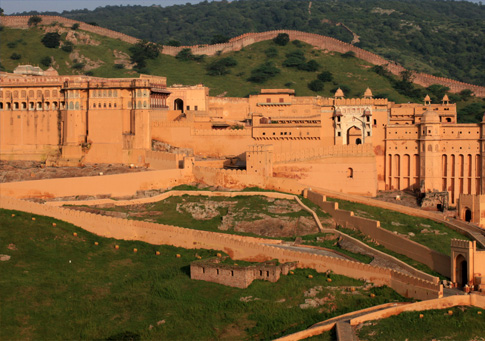
DAY 9Jaipur
Elephants are said to symbolize good luck, and you are certainly in luck today. Leave the city, take a short drive to just outside Jaipur and embark on a colorful and romantic Elephant Safari through several small villages where you can truly feel the heartbeat of India. A visit to a local school will introduce you to the children who are about to tame India’s economic tiger, and perhaps practice their English with you, or teach you a few words in Hindi. You will have lunch at a picturesque restaurant, once a palace, before returning to Jaipur for an free afternoon of shopping, swimming or relaxing.
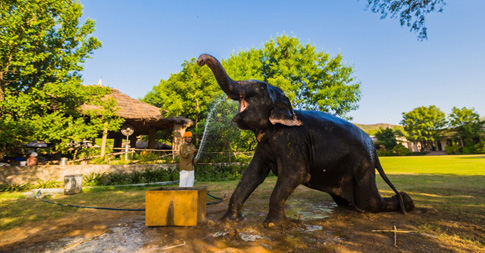
DAY 10Jaipur - Fatehpur Sikri - Agra
Wondrous and weird would describe Fatehpur Sikri, an imperial capital built in 1574 by the Mughul emperor Akbar but abandoned only fourteen years later for lack of water, it is said. Explore the Royal Palace that once housed Akbar’s 5,000 wives and concubines; continue to Jami Jasjid mosque with its great gate, and marble tomb. Before leaving town, indulge in one of the city’s delicious biscuits, hot from the oven. After a desert drive, enter the forests of Bharatpur for a wildlife and bird-watching rickshaw ride through world-famous Keoladeo National Park, where you will also have lunch nearby. Awaiting you tonight is a fantastical view of the lighted Taj Mahal just three kms. away. Fall asleep dreaming of perfect love.
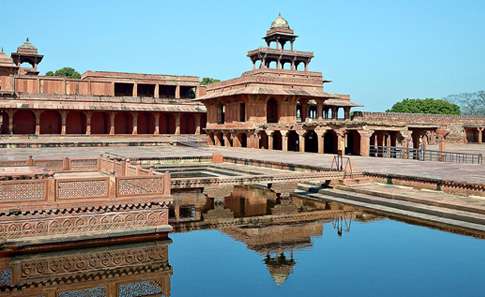
DAY 11Agra
Your arrival in Agra signals your completion of the second apex of India’s Golden Triangle of attractions: Jaipur, Agra, and later, Delhi. Once the capital of the Mughul Empire, Agra has many delights – a wealth of architecture, jewelry, handicrafts, and even marble replicas of artifacts you will see at the Taj. Foremost, is the amazing Agra Fort with its renowned elephant gates, built in 1565 in the form of a half-moon. The Taj, begun in 1632, follows an Islamic layout representing paradise, and was erected by Shah Jahan in memory of his favorite wife, Queen Mumtaz Mahal. You will visit the Taj at sunset when its marble domes and turrets are bathed in golden light.
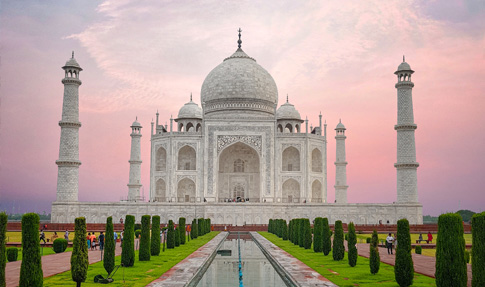
DAY 12Agra - Orchha - Khajuraho
An express train takes you today to Orchha, meaning “hidden place.” A former capital of the Bundela rajas, Orchha sits on the banks of the River Betwa, an exotic ruin that is ramshackle and exquisite all at once. Marvel at its magnificent fortifications, palaces and market, and hear the tales of martyrdom and pure love that played out here and are as fascinating as Orchha itself. A tasty lunch precedes a drive to Khajuraho. Tonight, time permitting; you will see a spectacular Sound and Light show at Khajuraho’s famous temples. (Subject to change)
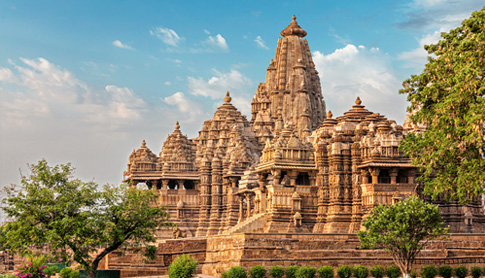
DAY 13Khajuraho - Varanasi
Khajuraho, a remote outpost famed for its exquisite and erotically-decorated Eastern and Western groups of temples, is a must-see on any itinerary. Built between AD 950 and AD 1050, the temples survived Muslim invaders because of their remote location, and are some of the finest examples of temple architecture on earth - particularly the Kandariya Mahadeva, whose central spire towers to 116 feet, with 80 lesser spires, all intricately carved. Later, a short flight takes you to Varanasi, where you will continue on to the buried city of Sarnath, a major Buddhist pilgrimage center believed to be the birthplace of the Gautama Buddha. Return to Varanasi and your hotel in the heart of this ancient city.
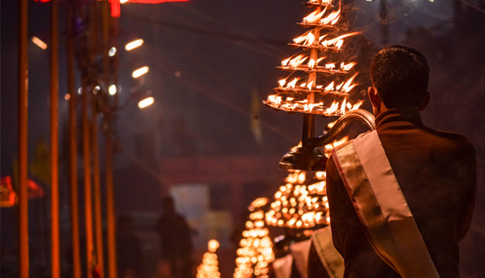
DAY 14Varanasi
Early this morning, a launch will take you for a cruise on the Ganges and the two-km. stretch of bathing ‘ghats’, or steps, that lead into the river. The role of religion in everyday Hindu life is never clearer than here. Formerly known as Benares, the city remains the center of the Hindu faith, its riverbanks visited for centuries by pilgrims, Brahmin priests and yogis seeking the water’s elixir of life. After your cruise, walk through the narrow alleys of the city, shop for silks and brassworks, and stop at the Durga Temple, known as the Monkey Temple for its … monkeys! Benaras Hindu University is your destination in the afternoon, and this evening, a return to the river to witness a moving Hindu Deepawali ceremony.
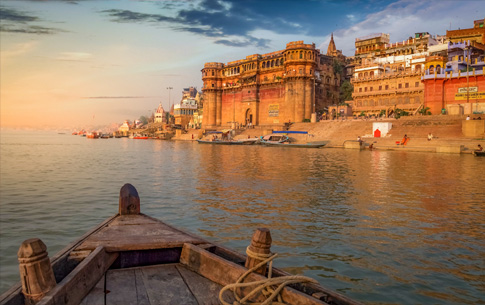
DAY 15Varanasi - Kathmandu, Nepal
A morning flight brings you to Kathmandu, the capital of Nepal. Join the city throngs on a two-hour afternoon walk through Nepal’s most populous city, starting at colorful Dunbar Square, a kaleidoscope of commerce, temples, beggars, palaces, cows, pilgrims, exhaust pollution, bells, music and yes, wonder. Step back in time at the Great Bell, the Kal Bhairav and the Temple of the Living Goddess. The newer Tamel area of embassies and smart shopping lies to the north, and to the south, Freak Street, a popular spot on the 1960s hippie trail, memorialized in song by Bob Seger.
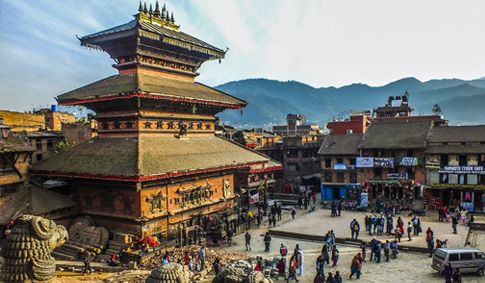
DAY 16Kathmandu
Begin the day’s exploration at Swayambhunath Temple, where an act of worship is said to merit thirteen-billion times more credit than anywhere else. Built on a hill, it offers breathtaking views of Kathmandu valley, the complex and its resident monkeys. Its ancient Stupa is Buddhism’s most profound in Nepal and is replicated throughout the valley. Next visit next Pasupathinath, the holiest Hindu site in the valley, and often likened to Varanasi. Wives used to commit sati here, throwing themselves on their husbands’ funeral pyres; to die and be cremated here is said to end the cycle of death and rebirth. Continue to Bouddhanath (Boudha), to see the most important Tibetan Stupa outside Tibet and a Mecca of Tibetan exiles. Round out your tour visiting Patan, also called Lalitpur, City of Beauty and a place of peace and artisans at work … and lastly, Bhadgaon, almost a medieval world of its own.
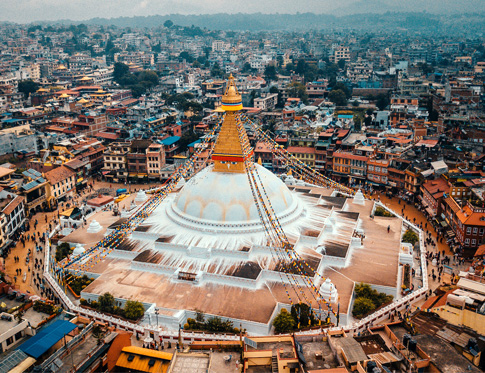
DAY 17Kathmandu - Delhi
Fly this morning to Delhi, the third and final corner of India’s Golden Triangle, where you’ll experience a melding of old and new. In the afternoon, tour Old Delhi and its seven ancient cities, marked by the rise and fall of myriad conquerors. Steeped in a colorful past centuries old, its grand monuments and palaces are a living testament to an unparalleled bygone era. Visit the Red Fort and Palace, and then marvel at Jama Masjid, India’s largest mosque with its three domes and ravishingly rich interiors. Shop at Chandni Chowk, a covered street and colorful market, then proceed to Raj Ghat, the memorial site of the Mahatma Gandhi.
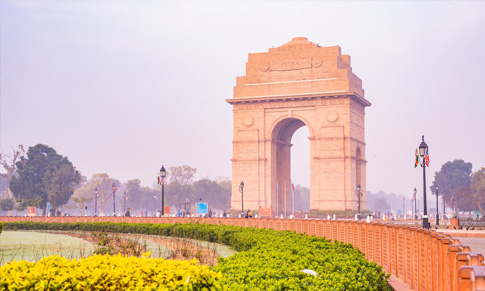
DAY 18Delhi
Now discover the other side of the city with a morning tour of New Delhi, built by the British in the 1920s and known for its sweeping greens and gardens, its broad, tree-lined avenues. Visit two monuments from Delhi's past - Humayun's Tomb and Qutub Minar as well as a historic temple, then continue along the ceremonial avenue, Rajpath, past the imposing India Gate and Parliament House. Late this evening, you will be transferred to the airport.
